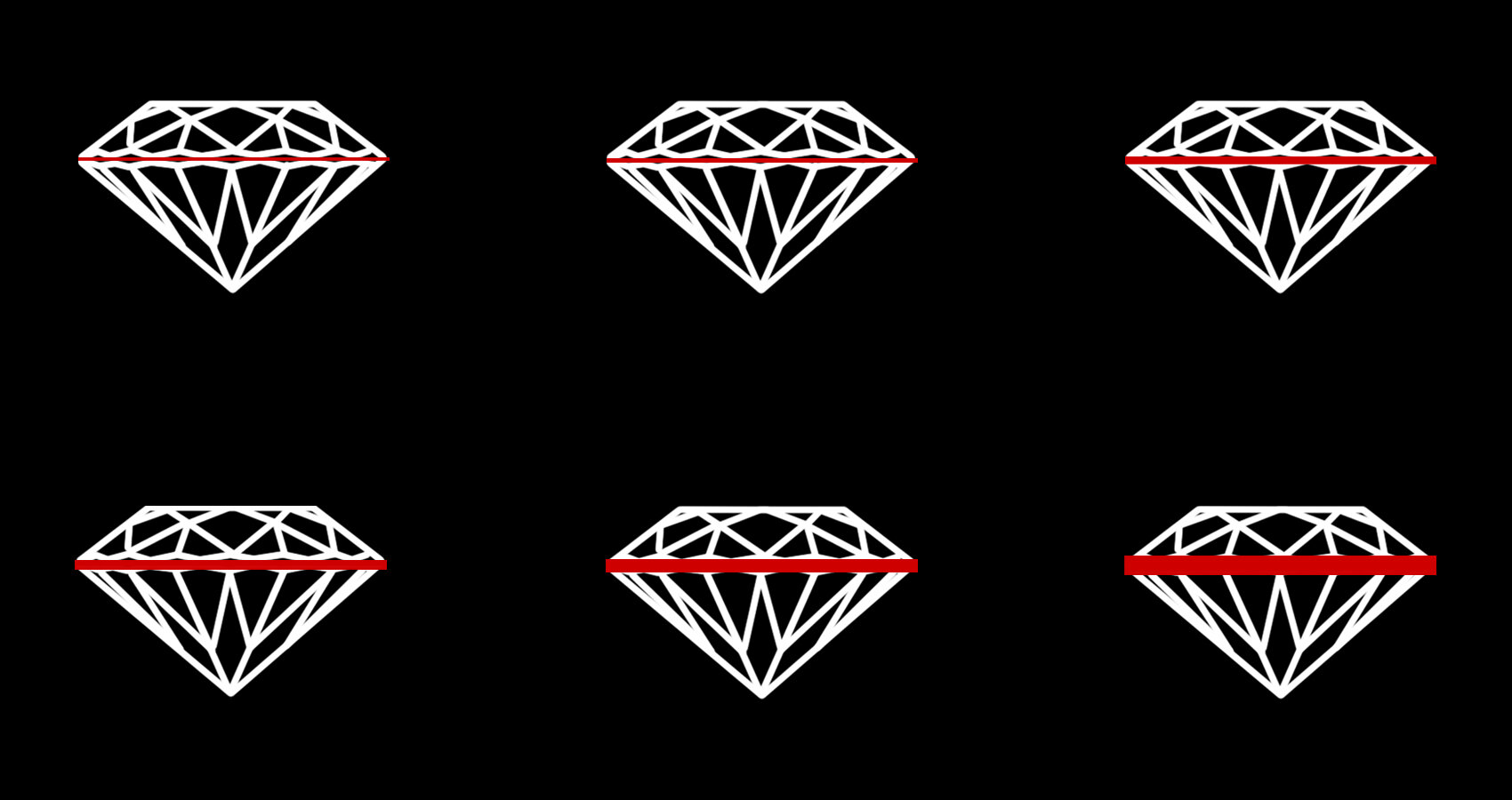All Things You Never Knew About Buying Diamonds
Left - Emerald Cut Diamond , 8ct, Grade D, VS1 | Right - Pear Shape Diamond, 8.2ct, Grade D, VVS2
When it comes to diamonds, there are many cliches that come to mind. “Diamonds are forever”, “Diamonds are a girl’s best friend” and ultimately, that the 4Cs (Cut, Colour, Carat, Clarity) are what matters most. We’re not here to dispute any of that, but there’s actually far more to diamonds than what’s covered in pop culture and mainstream magazines. If you want to get serious about diamonds (and size is really not everything!), listen to what our co-founder, Danilo Giannoni, has to say about these gems – backed by his over 30 years of experience in the high jewellery business.
Bow ties, windows and girdles – oh my!
A diamond’s cut refers to the shape in which the stone has been well cut by a jeweller. Generally, diamonds are cut into these shapes: Brilliant (round), Princess (square), Emerald, Pear, Marquise, Oval and the less-common heart-shape.
No one type of cut is superior to another; it really depends on your personal preference and what you have in mind for a piece of jewellery. However, an excellently-cut diamond should come with a “wider face” (top portion of the stone) and proper symmetry of facet arrangement. This is what will create the most desirable visual effect and enhance the look of the stone. For example, a 2 carat diamond that is well-cut can look like it weighs 4 carats or more by showcasing its brilliance and fire.
Bow tie effect in diamonds. (Image reference: Beyond 4Cs)
When a diamond’s cut is not well executed, light will not reflect off the stone (or ‘leak’ out of it). This creates a dull, undesirable look known as the bow tie effect or window. These flaws are features that are usually excluded from the stone’s certification, so it is always important to examine any physical stone in person, if you’re serious about acquiring a good one.
Examples of diamond girdle thickness.
A diamond’s girdle thickness is another way to judge the quality of its cut. The girdle refers to the thin layer of separation that divides the crown above from the pavilion below. When the girdle of a diamond is too thick, the stone would appear smaller and lose some of its brilliance – especially in round diamonds. Having said that, thicker girdles are acceptable in fancy shaped diamonds (i.e. heart, pear or marquise) as long as it is generally well cut. This is because it does not affect the look as much as the round shaped diamonds.
What’s your diamond’s back story?
Like every star of the show, it’s important to take an interest in your gem’s origin story. Knowing where it was mined can give a clue but the “tech specs” matter too. A diamond’s type is a simple way of identifying whether it is natural, synthetic or treated. In most diamonds, trace elements are added as the result of treatment or synthesis in a laboratory for the purpose of improving appearances.
Diamond types. (Image reference: GIA)
95% of natural diamonds fall in the Type 1a category, the most common class of diamonds.
Type 1b diamonds tend to show a darker colour and far rarer as compared to Type 1a diamonds. They often appear deep yellow, orange, brown or greenish.
Among all diamonds out there, Type 2a stones are considered the most “pure” in terms of chemical composition. Diamonds of this type are the most valued and collectable ones due to rarity. These make up only 1% to 2% of all diamonds in existence.
Natural blue diamonds are in the Type 2b classification which are even more unique and rare as these make up barely 0.1% of all diamonds in the world.
Princess Cut Diamond
Understanding Undertones
A diamond’s colour grade is usually found in its accompanying certification which show or describe its colourlessness. But what we don’t see in the certificate is evidence of its colour’s undertones- information which is just as important. For example, a Grade D diamond can appear slightly yellowish due to undertone. Other common undertones that can be seen in diamonds are brown and grey.
Depending on how important a diamond’s colour is to you (and if you’re getting serious about gems, this should be the case!), do make arrangements to scrutinise the stone physically rather than through photos and videos (which can be manipulated and thus, misleading).
Heart Shape Diamond, 5ct, Grade D, VVS2
A diamond to fit your budget
Lastly, investing in diamonds is all about making a value-for-money purchase as it is about loving the stone. It’s easy to narrow your search to only Grade D diamonds, as these are usually of investment grade. However, because they’re rarer and more commonly sought-after by eager investors, their pricing may be inflated or out of reach. A better and more value-for-money alternative for savvy buyers would be to look towards Grade E diamonds instead. This grade of diamonds are virtually identical to the more popular Grade D’s but cost 30% less! Despite being a popular choice, we think that this Grade of diamonds can be a better purchase for your portfolio.
There is never a one-size-fits-all when it comes to acquiring a diamond, which is why we do not just subscribe to a template like the 4Cs. So many other factors come into play. If you’re interested in the finer points of gem collecting and investment, start a conversation with us.






